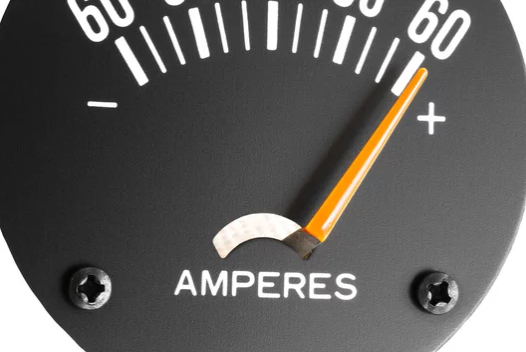In the world of engineering, precision is key. As global projects bring together teams from different countries, the need for standardization becomes increasingly vital. Two of the most commonly used measurement systems are the International System of Units (SI) and the Imperial system. This blog post will explore the significance of these systems, how to convert between them, and provide practical examples to enhance understanding.

Check out our Types of Unit Converters
Understanding the SI and Imperial Systems
SI Units
The International System of Units, commonly known as SI (from the French Système international d’unités), is the modern metric system. It is widely used across the globe, particularly in scientific and engineering disciplines. The SI system is built on seven base units:
- Meter (m) – Length
- Kilogram (kg) – Mass
- Second (s) – Time
- Ampere (A) – Electric current
- Kelvin (K) – Temperature
- Mole (mol) – Amount of substance
- Candela (cd) – Luminous intensity
Derived units in the SI system include units for force (Newton), pressure (Pascal), energy (Joule), and more.
Imperial Units
The Imperial system, often referred to as the customary system, is primarily used in the United States and a few other countries. This system has its roots in older measurement systems and is less uniform than the SI system. Common Imperial units include:
- Inches (in) – Length
- Feet (ft) – Length
- Pounds (lb) – Mass/Weight
- Fahrenheit (°F) – Temperature
- Gallons (gal) – Volume
The Importance of Conversion
Why Convert?
In engineering projects, teams often work with a mix of SI and Imperial units. For instance, a design may be drafted in metric units, while the construction may take place using Imperial measurements. Proper conversion ensures accuracy, reduces errors, and facilitates communication among team members from different regions.
Common Conversion Scenarios
Some of the most common scenarios where conversions are necessary include:
- Construction projects: Building specifications often require a mix of unit systems, necessitating conversions to ensure materials are measured correctly.
- Manufacturing: Precision engineering often requires measurements in both systems to accommodate clients or suppliers.
- Scientific research: Many scientific studies use SI units, while historical data may be recorded in Imperial units.
How to Convert Between SI and Imperial Units
To facilitate understanding, here are some common conversion formulas and examples between the two systems.
Length Conversions
Inches to Centimeters:
\[ 1 \, \text{inch} = 2.54 \, \text{cm} \]
Feet to Meters:
\[ 1 \, \text{ft} = 0.3048 \, \text{m} \]
Example: To convert 10 feet to meters:
\[ 10 \, \text{ft} \times 0.3048 \, \frac{\text{m}}{\text{ft}} = 3.048 \, \text{m} \]
Weight Conversions
Pounds to Kilograms:
\[ 1 \, \text{lb} = 0.453592 \, \text{kg} \]
Ounces to Grams:
\[ 1 \, \text{oz} = 28.3495 \, \text{g} \]
Example: To convert 50 pounds to kilograms:
\[ 50 \, \text{lb} \times 0.453592 \, \frac{\text{kg}}{\text{lb}} = 22.6796 \, \text{kg} \]
Temperature Conversions
Converting temperature between the SI and Imperial systems can be slightly more complex. The formulas to convert between Celsius (°C) and Fahrenheit (°F) are:
From Celsius to Fahrenheit:
\[ °F = (°C \times \frac{9}{5}) + 32 \]
From Fahrenheit to Celsius:
\[ °C = (°F – 32) \times \frac{5}{9} \]
Example: To convert 100°C to Fahrenheit:
\[ °F = (100 °C \times \frac{9}{5}) + 32 = 212 °F \]
Area and Volume Conversions
Square Feet to Square Meters:
\[ 1 \, \text{ft}^2 = 0.092903 \, \text{m}^2 \]
Gallons to Liters:
\[ 1 \, \text{gal} = 3.78541 \, \text{L} \]
Example: To convert 25 gallons to liters:
\[ 25 \, \text{gal} \times 3.78541 \, \frac{\text{L}}{\text{gal}} = 94.63525 \, \text{L} \]
Practical Tips for Converting Units
Use Conversion Factors
A handy way to manage conversions is to use conversion factors. Keep a list of common conversion factors in your workspace. This can save time and reduce errors.
Online Conversion Tools
In today’s digital age, numerous online calculators and conversion tools can facilitate quick conversions. While these are handy, always double-check critical conversions manually, especially for engineering projects.
Engage with Software Solutions
Engineering software often includes built-in tools for unit conversion. Familiarize yourself with these features, as they can streamline your workflow.
Be Consistent
When documenting measurements, always note the units clearly to avoid confusion. Consistency is key in engineering documents.
Try out our Free Math and English Worksheet Generators
Converting between SI and Imperial units is a crucial skill in engineering that enhances communication and accuracy. By understanding the fundamentals of each system and utilizing effective conversion methods, engineers can ensure successful project outcomes regardless of the unit system used. As the world continues to globalize, mastering these conversions will remain an essential aspect of engineering practice, enabling professionals to collaborate seamlessly across borders.